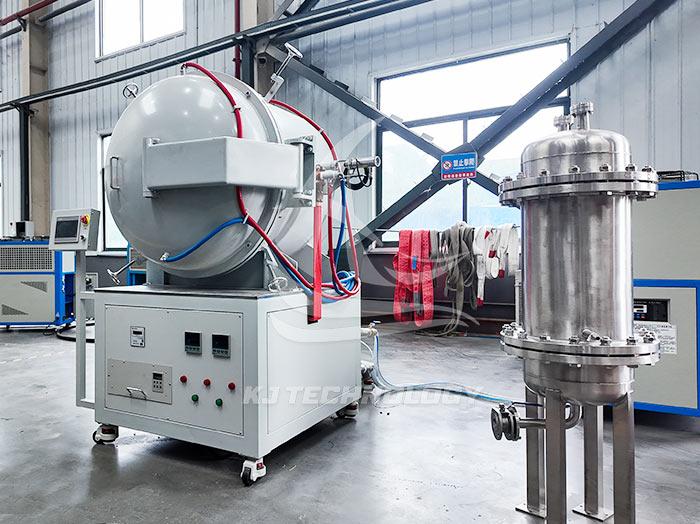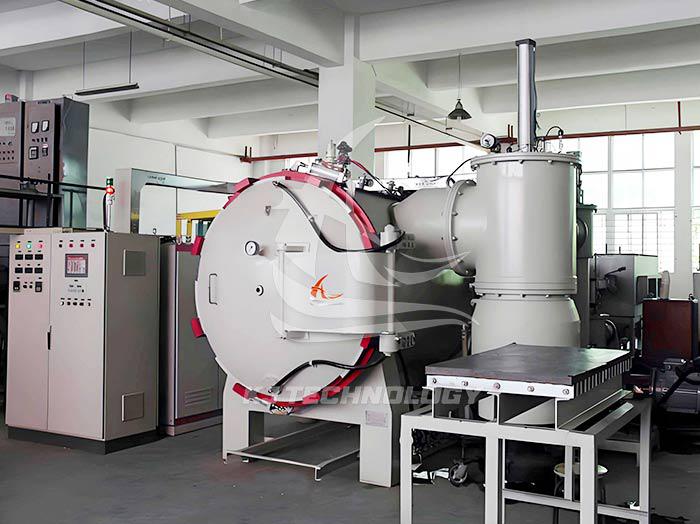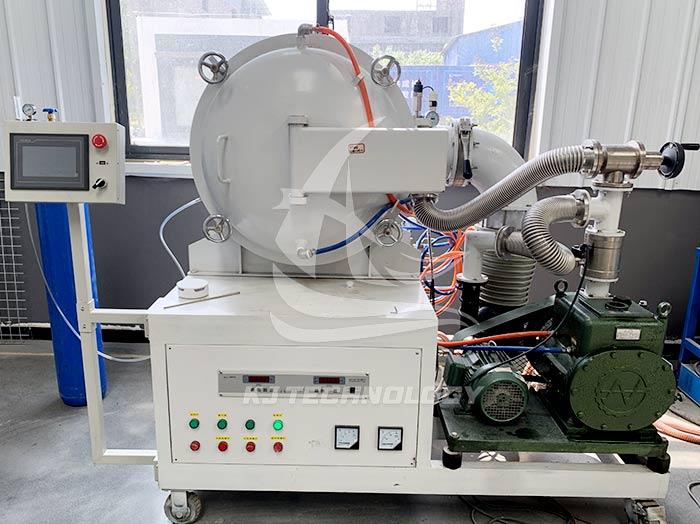Common faults and solutions of vacuum heat treatment atmosphere electric furnace
 06-30-2025 Author: KJ technology
06-30-2025 Author: KJ technology
The common faults and solutions of vacuum heat treatment atmosphere electric furnaces can be summarized into the following categories:
1. Insufficient vacuum degree
Fault phenomenon: The vacuum degree inside the furnace cannot meet the process requirements, which affects the heat treatment effect.
Possible reasons:
Vacuum pump malfunction: such as insufficient oil level, deteriorated oil quality, pump body wear, etc.
Seal damage: The furnace door seal ring is aging, damaged, or improperly installed.
Pipeline leakage: Loose, cracked, or leaking holes at the connection of the vacuum pipeline.
Vacuum gauge malfunction: The vacuum gauge display is inaccurate or damaged.
resolvent:
Check the vacuum pump: confirm that the oil level is within the normal range, the oil quality is clear and free of impurities; If the pump body is severely worn, the vacuum pump needs to be replaced.
Replace seals: Regularly inspect the furnace door sealing ring and replace it promptly if aging or damage is found; Ensure that the sealing ring is flat and free from distortion during installation.
Repair leakage points: Use a vacuum leak detector to detect pipeline connections, tighten bolts or replace sealing gaskets after discovering leakage points; Repair or replace pipelines for leaks.
Calibrate vacuum gauge: Regularly calibrate the vacuum gauge to ensure accurate display; If the vacuum gauge is damaged, a new gauge needs to be replaced.
2. Abnormal temperature control
Fault phenomenon: The temperature inside the furnace fluctuates greatly and cannot be stabilized near the set value, or an alarm is triggered when the temperature is too high/too low.
Possible reasons:
Heating element malfunction: Heating element aging, open circuit or short circuit.
Thermocouple malfunction: Thermocouple damage, poor contact, or improper installation position.
Temperature controller malfunction: Temperature controller parameter settings are incorrect, damaged, or malfunctioning.
Power supply issue: unstable power supply voltage or circuit failure.
resolvent:
Replace heating elements: Regularly inspect heating elements and replace them promptly if aging or damage is found; Ensure that the heating element is securely connected without any looseness.
Calibration or replacement of thermocouples: Check whether the thermocouple connection is firm and the contact is good; If the thermocouple is damaged, it needs to be replaced with a new thermocouple and ensure that the installation position is correct (distance from the heating element>100mm).
Check the thermostat: calibrate the thermostat parameters to ensure consistency with process requirements; If the thermostat is damaged, it needs to be replaced with a new one.
Stable power supply: Check if the power supply voltage is stable. If the voltage fluctuates greatly, a voltage regulator needs to be installed; Check if the circuit connections are secure, free from looseness or short circuits.
3. Unstable atmosphere control
Fault phenomenon: The concentration of the atmosphere in the furnace deviates significantly from the set value, affecting the heat treatment effect.
Possible reasons:
Gas supply system malfunction: such as insufficient gas cylinder pressure, inaccurate gas flow meter, etc.
Pipeline blockage: Impurities or condensates exist in the gas pipeline, causing poor airflow.
Control system failure: such as atmosphere controller malfunction, solenoid valve damage, etc.
resolvent:
Check the gas supply system: confirm that the gas cylinder pressure is sufficient and the gas flow meter calibration is effective; If the pressure of the gas cylinder is insufficient, the gas cylinder needs to be replaced; If the flowmeter is inaccurate, it needs to be calibrated or replaced.
Cleaning pipelines: Regularly clean gas pipelines to remove impurities and condensates; Ensure that there is no looseness or leakage at the pipeline connection.
Repair the control system: Check if the atmosphere controller and solenoid valve are working properly; If the controller malfunctions, a new controller needs to be replaced; If the solenoid valve is damaged, it needs to be replaced with a new one.
4. Mechanical structural failure
Fault symptoms: such as the door not closing tightly, abnormal noise from the fan, and inability to operate the pneumatic valve.
Possible reasons:
Loose hinges or deformed buckles of the door: causing the door to fail to close tightly.
Foreign objects entering the interior of the fan or loose motor screws: producing abnormal noise.
Pneumatic valve solenoid valve malfunction or insufficient compressed air pressure: causing the pneumatic valve to fail to operate.
resolvent:
Adjust the hinges and buckles of the door: ensure that the door can be tightly closed; Check if the sealing strip at the door is damaged and replace it promptly.
Cleaning the interior of the fan: removing foreign objects; Tighten the motor screws and eliminate any abnormal noise.
Check the solenoid valve and compressed air pressure: If the solenoid valve fails, it needs to be replaced with a new one; If the compressed air pressure is insufficient, adjust the pressure to the normal range.
5. Other faults
Fault symptoms: such as abnormal hydraulic system noise, unstable pressure, or low pressure.
Possible reasons:
Blockage of oil suction pipeline or oil filter: causing abnormal noise in the hydraulic system.
Overflow valve blockage or damage caused by dirt: leading to unstable hydraulic system pressure.
Leakage of oil cylinder or oil motor sealing device: causing low pressure in the hydraulic system.
resolvent:
Clean the oil suction pipeline and oil filter: keep them unobstructed.
Cleaning or repairing the overflow valve: Remove dirt or replace damaged overflow valves.
Check and replace the sealing device: Ensure that there is no leakage in the oil cylinder or oil motor.








